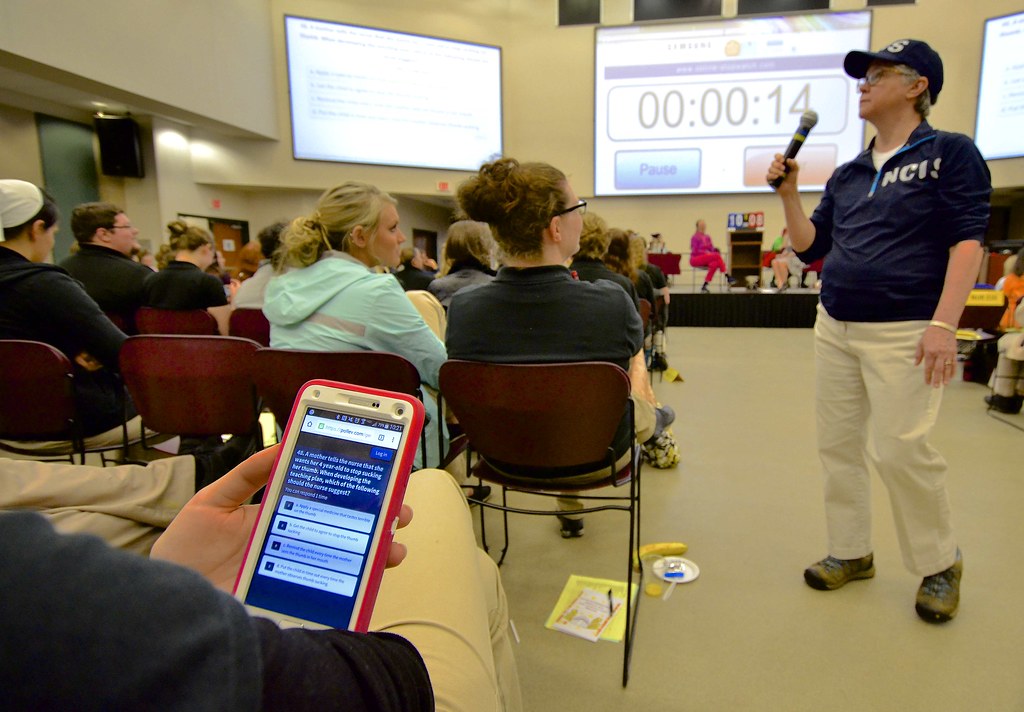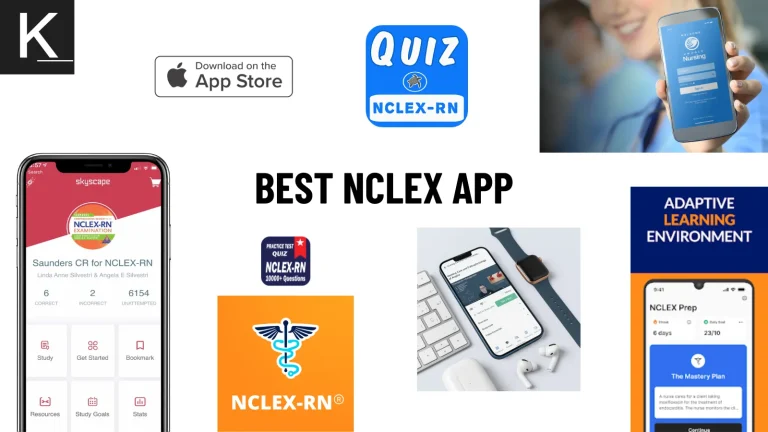Is The New NCLEX Easier Or Harder? 4 Main Changes

Are you preparing for the NCLEX exam? Have you heard that it’s changed and wondered, “Is the new NCLEX easier?” The fact that many nursing students and professionals have been asking the same question.
I’ve researched and gathered information to help you answer this commonly asked question. Dive in my post right now!
Is The New NCLEX Easier?
No! The new NCLEX is not easier than the traditional NCLEX. Contrary to popular belief, it’s the enhanced version of the old NCLEX with new elements, like the scoring system and item types. The goal is to measure the candidate’s clinical judgment skills better.
While the number of questions may seem fewer, the truth is that the content is still as tricky as traditional NCLEX tests. You must prepare well to familiarize yourself with the new NCLEX.
If you haven’t taken the new NCLEX, you may wonder what changes in this test. I will analyze and tell the primary differences between the next-generation NCLEX and its predecessor.
Main Changes In The New NCLEX
While the new NCLEX incorporates several existing features of the old version, it has significant changes you should know before taking the test:
1. New question types
All the question types of the traditional NCLEX still appear on the updated version, but you will see many new question types when taking the new NCLEX. They are innovative and different from the question types you often encounter when doing the traditional NCLEX exam.
Here are some of the new question formats you may see on the new NCLEX:
- Extended multiple choice
- Case Scenario
- Drop down answers
- Extended drag-and-drop
- Matrix/grid
- Highlight text
- Trend
2. Tricker question content
The new NCLEX emphasizes higher cognitive test items, making the question content harder. The questions on the updated exam require more analysis and synthesis of information instead of simple recall.
Candidates must demonstrate a deep understanding of nursing concepts and the ability to apply them in complex, real-world scenarios. This way, the test can assess the nurse’s readiness to handle the realities of nursing practice.
3. New scoring system
The revamped examination now includes Next Generation NCLEX (NGN) style items, allowing for partial credit. The scoring methods for these items are referred to as +- scoring, Triad scoring, and Dyad scoring.
Unlike the old scoring method, where an item is correct or incorrect, the new polytomous scoring system allows candidates to earn partial credit.
4. Number of score questions
The next-generation NCLEX has increased the number of scored questions to between 70 and 135, including 15 pretest questions.
The unscored questions remain part of the test but will not change your overall score. Instead, they are used for exam development in the future.

Comparison Between The Old And New NCLEX
How is the new NCLEX different from the old version? I will provide a comparison for a clearer overview.
Similarities
- Computer Adaptive Testing
Both two versions use Computer Adaptive Testing (CAT). The computer system adjusts the difficulty of the questions based on your performance.
If you answer a question correctly, the system presents a more difficult question next. Conversely, you get an easier question if you give a wrong answer.
- Existing question types
You can see all the existing question types used on both the traditional and updated NCLEX exams, including:
- Multiple choice
- Hot spot
- Select all that apply
- Drag and drop
- Fill in the blank
- Graphic answer (multiple-choice form)
- Chart/graphics questions
- Audio/video
Differences
The test format:
While the traditional NCLEX is a linear exam, the new format incorporates more case study simulations and complex, scenario-based questions.
The focus
The next generation NCLEX places a stronger emphasis on clinical judgment, reflecting the real-world complexities of nursing. It’s a shift from the old exam, focusing more on factual recall.
The number of scenario-based questions:
The updated NCLEX has increased the number of scenario-based questions designed to test the nurse’s ability to think critically and make decisions in real-world situations.
Scoring system:
The old NCLEX uses a numerical scoring system, but the new version uses the partial scoring method.
Question types:
Besides the existing question types, the next-gen NCLEX introduces new items, like highlight/hotspot questions and other types mentioned above.
To summarize, here is a comparison table of the old and new NCLEX:
| About | Old NCLEX | New NCLEX |
| Test format | Linear | Scenario-based |
| Focus | Nursing content | Clinical judgment |
| Number of scenario-based questions | Fewer | More |
| Scoring system | Numerical | Partial scoring |
| Question types | Standard | Standard & new types |
What Is The Pass Rate For The New NCLEX?
According to the NCSBN, the pass rates for the new NCLEX format have been relatively promising. For US-educated first-time test-takers, the pass rate for the NCLEX-RN was 88.56% in 2023. For the NCLEX-PN, it was 86.67%.
These rates are comparable to those seen in previous years, which means that despite the changes, the next-gen exam yields consistent results.
While the pass rates are encouraging, several factors can influence these percentages, including:
- The quality of the nursing program
- The preparedness of the nurse student
- The ability of the candidate to adapt to the new format
How Do People Review About New NCLEX?
Many people have taken the new NCLEX and shared their experiences and reviews on various social media platforms, as shown below:
Quora
Many users report that the exam is challenging but fair. They shared that the new exam focuses more on analysis and application than simple memorization.
Most test-takers agree that while the test is hard, it’s manageable with consistent study and practice.
Tik Tok
The reaction to the updated NCLEX exam has been relatively positive, with many TikTokers praising the changes for making the exam more relevant to real-life nursing situations.
How To Prepare For The New NCLEX?
To pass the new-gen NCLEX, you must adapt and evolve your study strategies to prepare well for the new format. Here are the tips that I’ve applied for a successful examination:
Understand The New Test Format
I recommend familiarizing yourself with the new exam format, including the focus, the question number, the question content, and the scoring system mentioned above. This way, you can know what to expect and reduce test anxiety.
The exam now involves more complex, real-world patient scenarios that require sound clinical judgment. To develop these skills, engage in simulation exercises and case studies.
Sarah Reid
Use Updated Materials
The material resources should cover the latest content and include practice questions that reflect the new types of questions on the new NCLEX. Also, choose reputable sources for your materials to ensure the information is accurate and up-to-date.
Manage Practice Time
Create a study schedule, allowing ample time to review each topic and practice questions. Stick to your plan and adjust it as necessary based on your progress.
Final Thoughts
Is the new NCLEX easier? Unfortunately, no. The updated version seems more challenging than the old one, with a new scoring system, test format, and more item types.
So, if you want to pass this exam, study thoroughly and prepare well for various question formats. If you need help, don’t hesitate to contact me for study resources!







